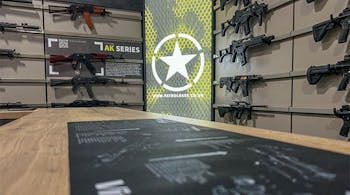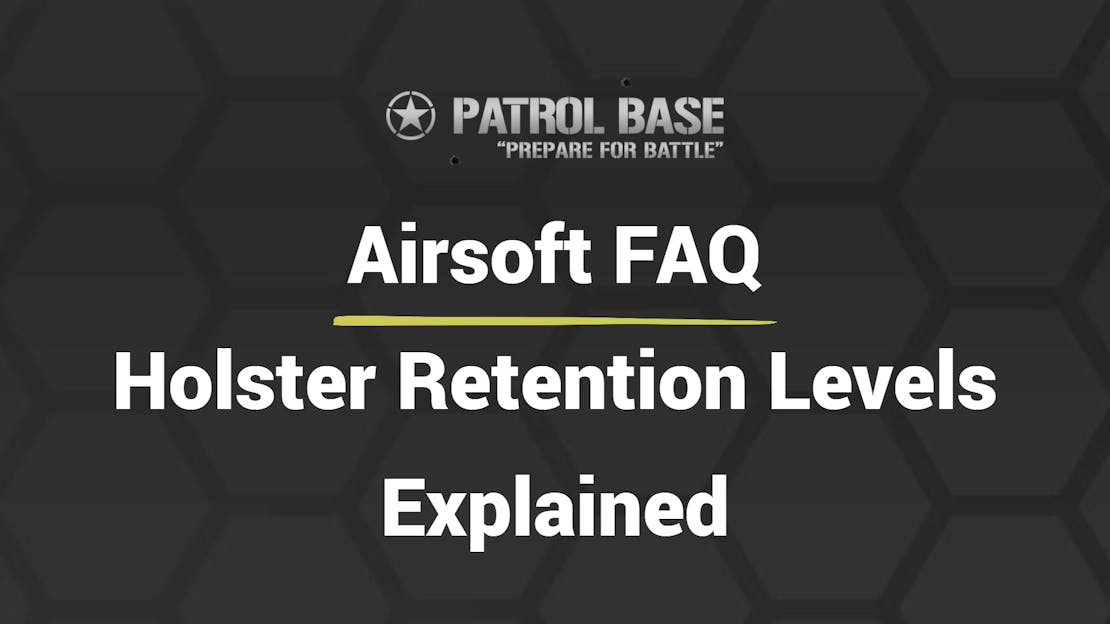
Airsoft FAQ: Holster Retention Levels Explained
What does "Holster Retention Level" mean?
As it pertains to Airsoft, holster retention levels are a matter of personal preference related to where you prefer the balance of security and draw speed to be. In the real firearms world, this subject is far more serious, and the type of holster you choose will be dictated by what you are going to be doing with your firearm.
Competition shooters often prefer a Level 1 retention holster so they can access their sidearms quickly while staying abreast of competition safety rules. Civilian Concealed Carry Weapon permit holders in the US often use Level 1 retention holsters as the concealed nature of the firearm mitigates the risk of it being taken by an assailant.
Retention Level 2 is ideal for military use, offering a more secure alternative to Level 1 holsters which will help retain the pistol during dynamic movement and rough treatment.
Level 3 retention is preferred by Law Enforcement, who often find themselves in close contact with a suspect who may attempt to take their sidearm. Level 3 is also popular with civilians who open carry for the same reasons.
Read on for more info on the most common holster retention levels used in Airsoft, what they do and the pros and cons of each!
Retention Level 1: Passive Retention
Holsters marked as "Level 1 Retention" usually make use of friction to keep the pistol securely in place. This type of holster is popular with military and competitive shooters due to the favourable balance of ease of access and security Level 1 retention provides.
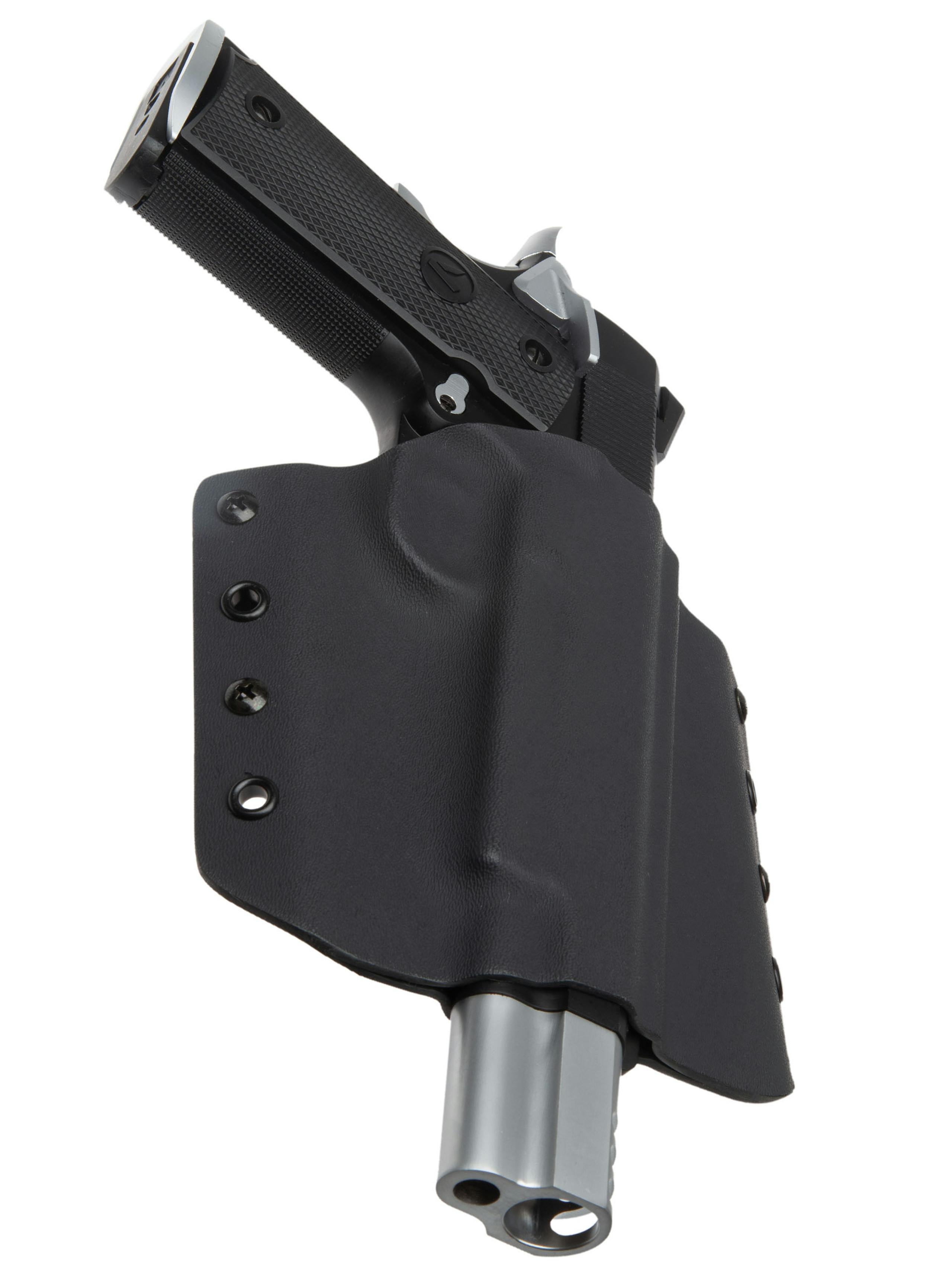
Retention Level 1 holsters often have adjustment built in, usually via screws which can be tightened or loosened to increase or lessen the force required to draw the pistol. The 8Fields Tactical Open Top Kydex Holster is an example of a Level 1 retention holster.
Retention Level 2: Active Retention
Level 2 Retention holsters usually make use of both friction and a locking device to keep the pistol retained. The locking device usually takes the form of a button which needs to be pressed to free the pistol from the holster. Most Airsoft retention holsters are level 2, including the NUPROL Paddle style holsters and AMOMAX Paddle Holsters.
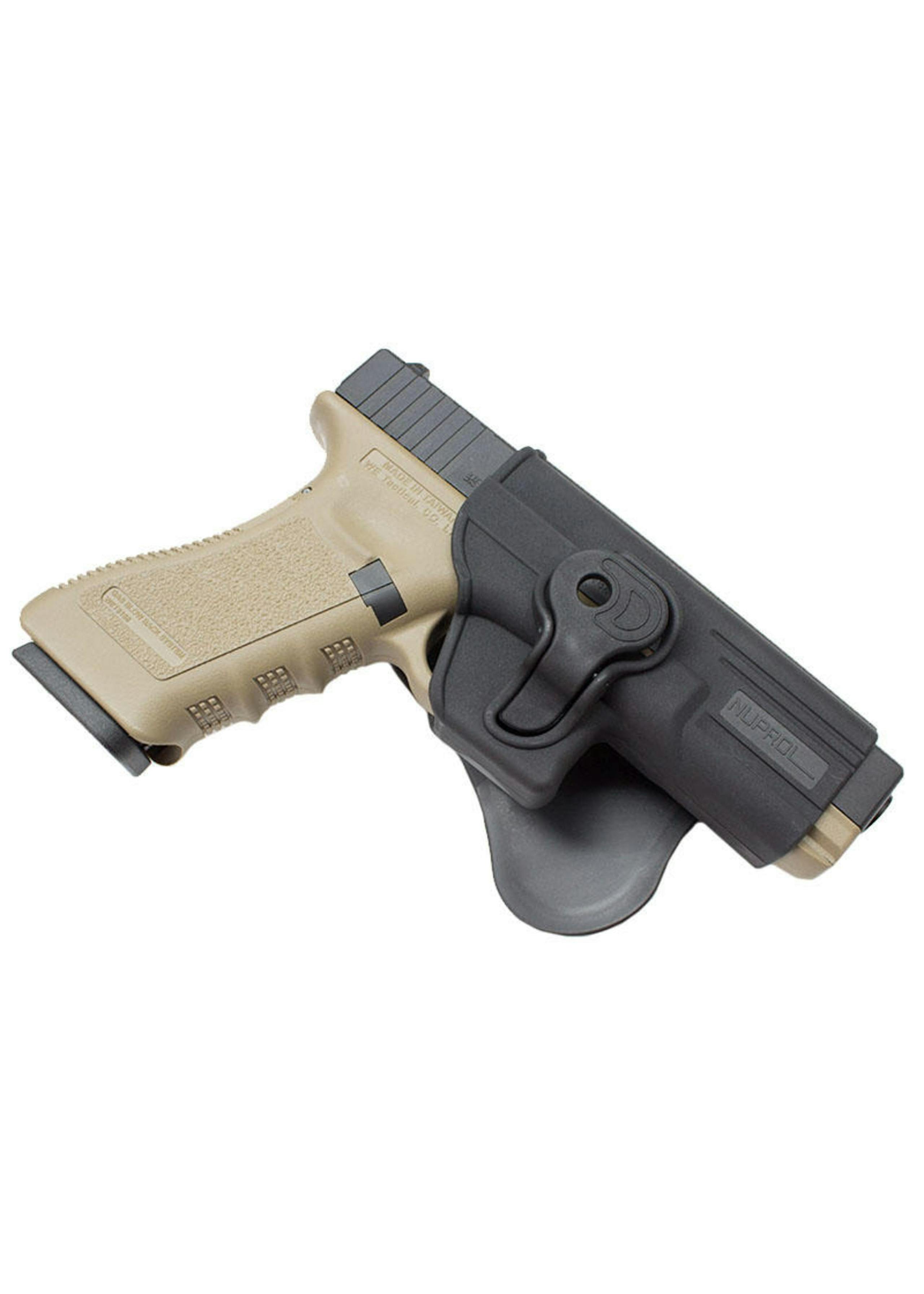
For Airsoft, Level 2 offers the best balance of security and a speedy draw, guaranteeing that your pistol will not go flying if you play aggressively or clumsily and giving you fast access to your sidearm when needed.
Retention Level 3: Enhanced Retention
Retention Level 3 adds an additional retention lock to a Level 2 holster, making it much more secure and ideal for law enforcement officers and security personnel who may come into close contact with someone who may want to take their sidearm.
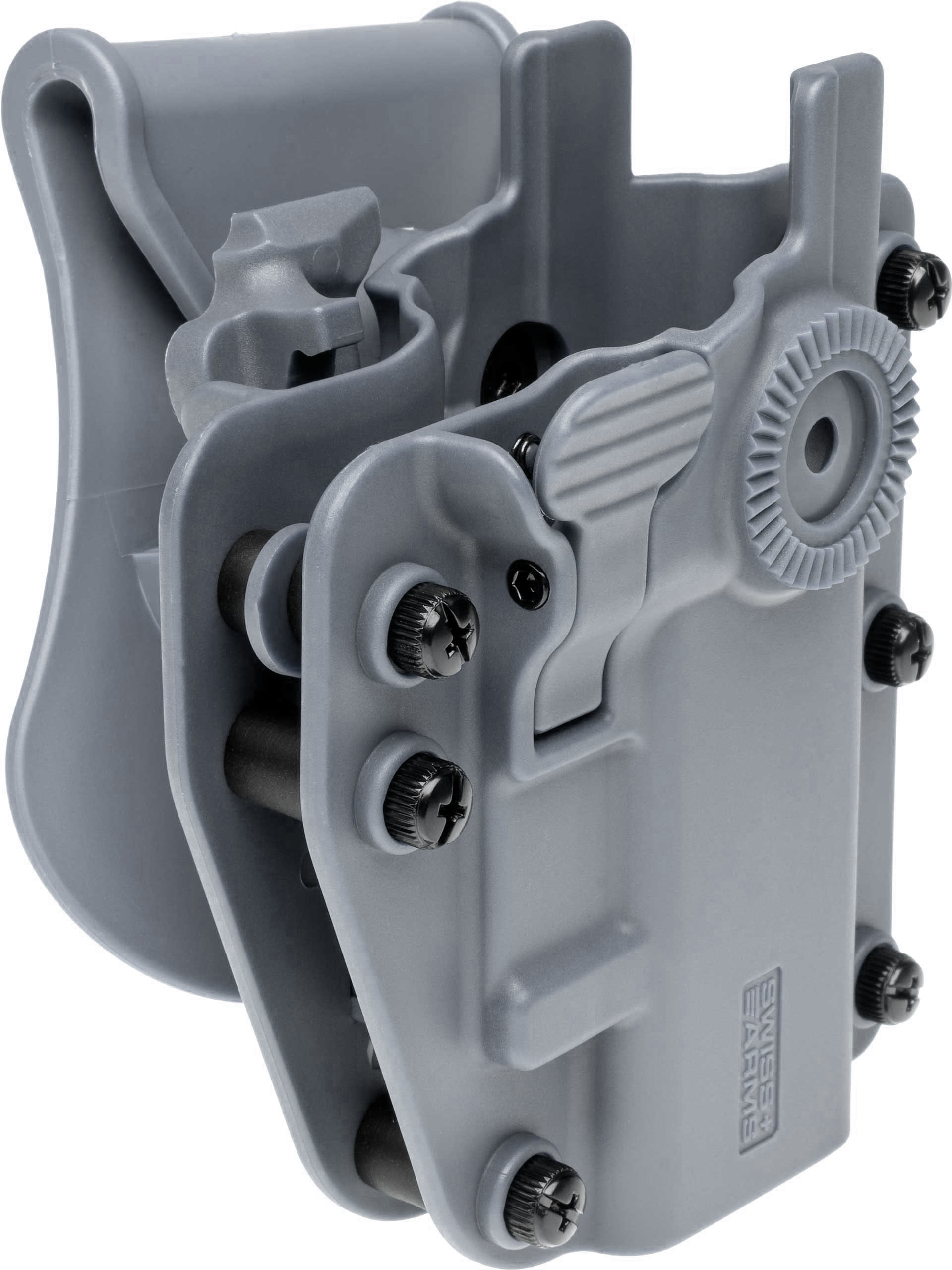
The Swiss Arms AdaptX universal holster is available in both Level 2 and Level 3 configurations, with the difference between the two being the additional retention button on the Level 3 version. Some Level 3 retention holsters make use of a thumb-actuated button like the AdaptX, but others use a pivoting guard which sits over the top of the pistol.
Other Retention Levels
Higher levels of retention are available in the real steel world, as are fully open competition-style holsters which have practically no retention, designed for pure speed. In the real world, holster retention levels are quite technical and manufacturers often boast about new retention testing standards and if you read into this deeply, you may come out more confused than before!
We have kept things to the basics here, sticking with the easy-to-categorise differences between holster types commonly used in Airsoft and nailing the definition down to clear and recognisable features. If you want to know a bit more about other holster retention levels and brave the muddy waters, read on for a quick summary!
Retention Level 4 & 5
Retention levels 4 & 5 are usually only required by Law Enforcement and Military personnel who require additional security for their sidearm and have the time to train with a more complex system to the point of perfect proficiency.
Level 4 adds an additional retention feature to the level 3 format, usually in the form of an additional thumb break but sometimes adding in the need to twist the pistol as it is drawn to defeat the retention of the holster.
Level 5 adds yet another retention mechanism, bringing the total different active retention methods on a level 5 holster up to 4, with the first level provided by friction and the fit of the pistol to the holster itself (also known as "Passive Retention").
Open competition holsters
Holsters used for IPSC or other pistol competitions have an emphasis on speed of draw, with minimal concerns given to security. As such, these holsters usually only connect to the pistol via the trigger guard, often making use of magnets to keep the pistol retained during movement while remaining lightening quick to draw.
Some competition holsters also use what is known as a "muzzle support" which adds an extra level of safety by preventing the pistol from rotating when bumped which can result in the pistol falling from the holster. The muzzle support indexes with the barrel of the pistol and protrudes inside slightly, requiring that the pistol is lifted slightly to draw.
Fabric Universal Holsters
These are the most basic type of holster available to Airsofters and are credited with being cheaper than polymer or Kydex holsters and offering a large amount of adjustability and compatibility with a wide range of pistols. They are available in MOLLE-mounted configuration, Drop-Leg configuration or Belt-mounted configuration.
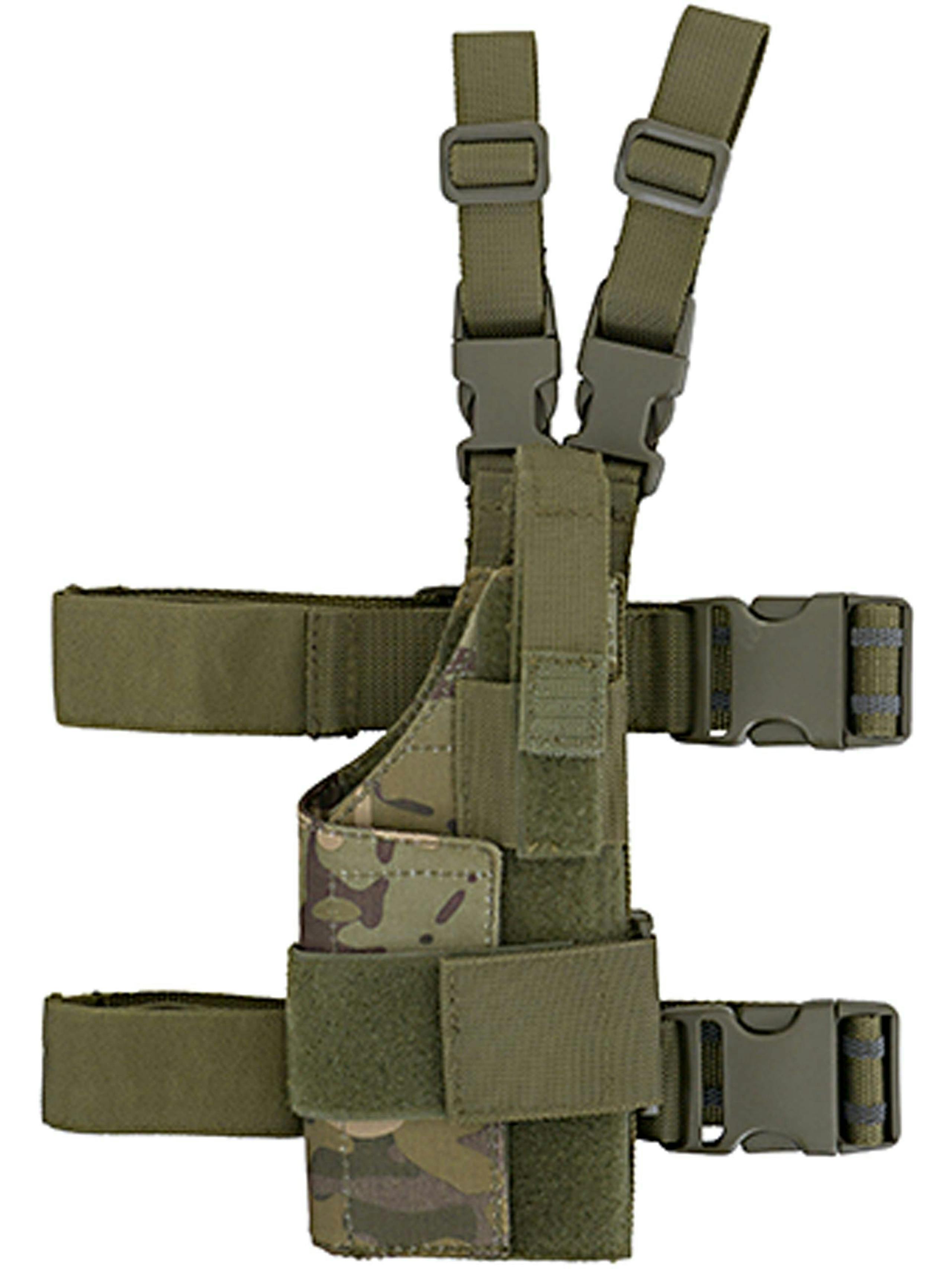
This type of holster is a good choice to start with and for larger pistols such as the Mk23 and AEP (automatic electric pistol) platforms which are generally bigger than their GBB counterparts and not compatible with retention holsters.
Which Holster type should I choose?
We recommend levels 1, 2 or 3 for Airsoft skirmishing, depending on your playstyle and skill level. For most Airsofters, level 1 retention would be adequate, providing enough security to keep the pistol in place in most scenarios while minimising the skill needed to draw the pistol quickly at a moment's pause.
A more aggressive playstyle involving energetic movement such as diving, sprinting and crawling would require level 2 or 3 retention for optimal security, though these holster types come with the drawback that they require more training to master and are more difficult to use under pressure. As always, practice makes perfect, so if you are worried a level 2 or 3 holster will slow you down, have faith that it won't if you put the time in!
Level 3 holsters are often preferred by Milsim skirmishers and those who have Law Enforcement style loadouts, primarily because they like to use the exact gear used by real operators. Commonly used level 3 retention holsters include those made by Safariland which are also very popular for Military and Law Enforcement users in the real world.
As mentioned, retention level 3 holsters require a fair bit of practice to master when compared to level 1 but more dedicated Airsofters will practice until their draw from a level 3 holster is as instinctive and fast as it would be from a level 1 holster.
There you have it! You should now have the intel you need to make the right choice when it comes to setting yourself up with a holster for Airsoft skirmishing. If you are ready to check out some holsters, click the button below!

